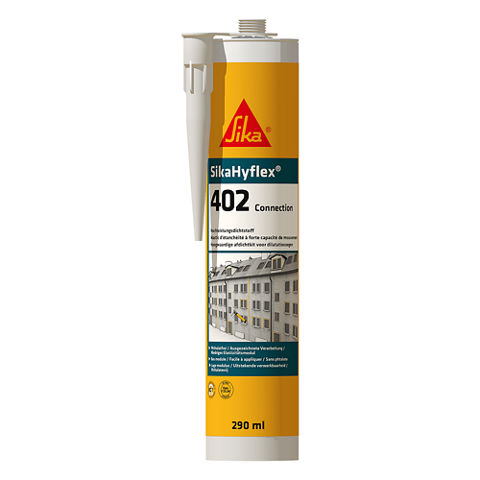The substrate must be sound, clean, dry and free of all contaminants such as dirt, oil, grease, cement laitance, old sealants and poorly bonded coatings which could affect adhesion of the sealant.
The substrate should be of sufficient strength to cope with the stresses induced by the sealant during movement.
Removal techniques such as wire brushing, grinding, grit blasting or other suitable mechanical tools can be used.
All dust, loose and friable material must be completely removed from all surfaces before application of any activators, primers or sealant. Where joints in substrate are saw cut. After sawing, all slurry material must be flushed away and joint surfaces allowed to dry.
SikaHyflex®-402 Connection adheres without primers and/or activators.
For optimum adhesion, joint durability and critical, high performance applications such as joints on multi-storey buildings, highly stressed joints, extreme weather exposure. The following priming and/or pre-treatment procedures shall be followed:
Non-porous substrates
Aluminium, anodised aluminium, stainless steel, PVC, galvanised steel, powder coated metals or glazed tiles. Slightly roughen surface with a fine abrasive pad. Clean and pre-treat using Sika® Aktivator-205 applied with a clean cloth.
Before sealing, allow a waiting time of > 15 minutes (< 6 hours).
Other metals, such as copper, brass and titanium-zinc, cleaned and pre-treat using Sika® Aktivator-205 applied with a clean cloth. After a waiting time of > 15 minutes (< 6 hours). Apply Sika® Primer-3 N applied by brush. Allow a further waiting time of > 30 minutes (< 8 hours) before sealing.
Porous substrates
Concrete, aerated concrete and cement based renders, mortars and bricks. Prime surface using Sika® Primer-3 N applied by brush.
Before sealing, allow a waiting time of > 30 minutes (< 8 hours).
For more detailed advice contact Sika Technical Services for additional information.
Note: Primers are adhesion promoters and not an alternative to improve poor preparation / cleaning of the joint surface. Primers also improve the long term adhesion performance of the sealed joint.

